[高中英语]图解教材(思维导图+微试题)人教高中英语必修5学案:Unit 1 Great scientists
- 格式:doc
- 大小:583.00 KB
- 文档页数:3
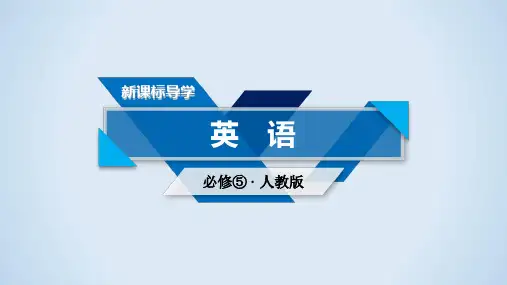
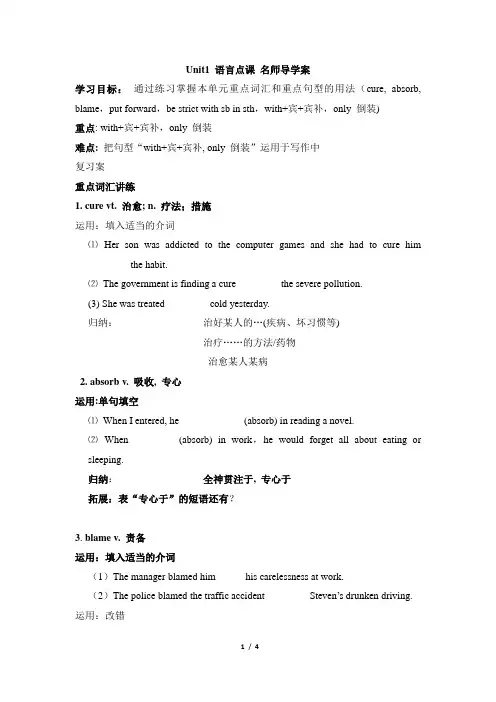
Unit1 语言点课名师导学案学习目标:通过练习掌握本单元重点词汇和重点句型的用法(cure, absorb, blame,put forward,be strict with sb in sth,with+宾+宾补,only 倒装)重点: with+宾+宾补,only 倒装难点:把句型“with+宾+宾补, only 倒装”运用于写作中复习案重点词汇讲练1. cure vt. 治愈; n. 疗法;措施运用:填入适当的介词⑴Her son was addicted to the computer games and she had to cure him________ the habit.⑵The government is finding a cure ________ the severe pollution.(3) She was treated ________ cold yesterday.归纳:________________ 治好某人的…(疾病、坏习惯等)________________ 治疗……的方法/药物_________________ 治愈某人某病2. absorb v. 吸收, 专心运用:单句填空⑴When I entered, he ____________ (absorb) in reading a novel.⑵When _________(absorb) in work,he would forget all about eating orsleeping.归纳:________________ 全神贯注于, 专心于拓展:表“专心于”的短语还有?________________________________________ 3. blame v. 责备运用:填入适当的介词(1)The manager blamed him _____ his carelessness at work.(2)The police blamed the traffic accident ________ Steven’s drunken driving. 运用:改错(3)I do not blame you, but I blame me.(4)The children were not to blame on the accident.归纳:_________________为某事责备某人__________________把某事归咎于某人__________________(为某事)承担责任4. put forward运用:猜词义⑴We’ve put the wedding forward by two weeks. (意思________________ )⑵Mr. Smith put forward a suggestion that we should set up a special department.(意思___________ )⑶Her name was put forward for the lead role in the play. (意思__________ )拓展:储存__________________ 推迟_________________记下__________________ 扑灭_________________建造;搭起____________ 忍耐;忍受___________5. ___________________________ (在某方面)对某人严格要求运用:⑴Our English teacher is very strict ___ us __ our homework.⑵(改错) My mother is strict at her work and is also strict with me.写作句型仿写1. We walked happily in the forest with the birds singing.句型:with+宾+宾补(doing(表_________)/done(表___________)/to do(表___________)在语法填空中的运用:1. With a lot of homework _________(do), I can’t go to see the movie with youtonight.2. ________ people giving him food, clothing, and shelter, he simply saved andinvested everything .在短文改错中的运用:1. With hands tie, he couldn’t escape.●仿写:做完一切后, 他高高兴兴地出去踢足球了____________________________________________________________________2. Only if you are in London can you realize its beauty.●句型:Only +副词/介词短语/状语从句, 后用部分倒装●仿写:1. 只有用这种方法, 你才能在这么短的时间内完成它。
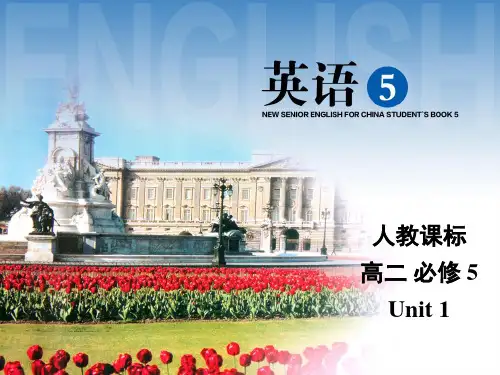
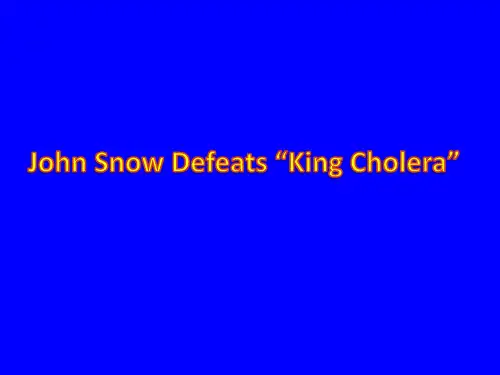
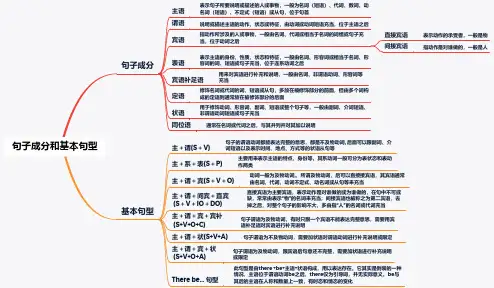
句子成分和基本句型句子成分主语表示句子所要说明或描述的人或事物,一般为名词(短语)、代词、数词、动名词(短语)、不定式(短语)或从句,位于句首谓语说明或描述主语的动作、状态或特征,由动词或动词短语充当,位于主语之后宾语指动作所涉及的人或事物,一般由名词、代词或相当于名词的词组或句子充当,位于动词之后直接宾语表示动作的承受者,一般是物间接宾语指动作是对谁做的,一般是人表语表示主语的身份、性质、状态和特征,一般由名词、形容词或相当于名词、形容词的词、短语或句子充当,位于连系动词之后宾语补足语用来对宾语进行补充和说明,一般由名词、非谓语动词、形容词等充当定语修饰名词或代词的词、短语或从句,多放在被修饰部分的前面,但由多个词构成的定语则通常放在被修饰部分的后面状语用于修饰动词、形容词、副词、短语或整个句子等,一般由副词、介词短语、非谓语动词短语或句子充当同位语通常在名词或代词之后,与其并列并对其加以说明基本句型主+谓(S+V)主+系+表(S+P)主要用来表示主语的特点、身份等。
其系动词一般可分为表状态和表动作两类主+谓+宾(S+V+O)主+谓+间宾+直宾(S+V+IO+DO)直接宾语为主要宾语,表示动作是对谁做的或为谁做的,在句中不可或缺,常常由表示“物”的名词来充当;间接宾语也被称之为第二宾语,去掉之后,对整个句子的影响不大,多由指“人”的名词或代词充当主+谓+宾+宾补(S+V+O+C)句子谓语为及物动词,有时只跟一个宾语不能表达完整意思,需要用宾语补足语对宾语进行补充说明主+谓+状(S+V+A)句子谓语为不及物动词,需要加状语对谓语动词进行补充说明或限定主+谓+宾+状(S+V+O+A)句子谓语为及物动词,跟宾语后句意还不完整,需要加状语进行补充说明或限定T here be... 句型此句型是由there +be+主语+状语构成,用以表达存在。
它其实是倒装的一种情况,主语位于谓语动词be之后,there仅为引导词,并无实际意义。
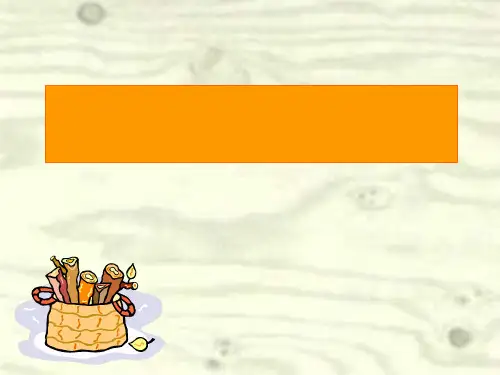
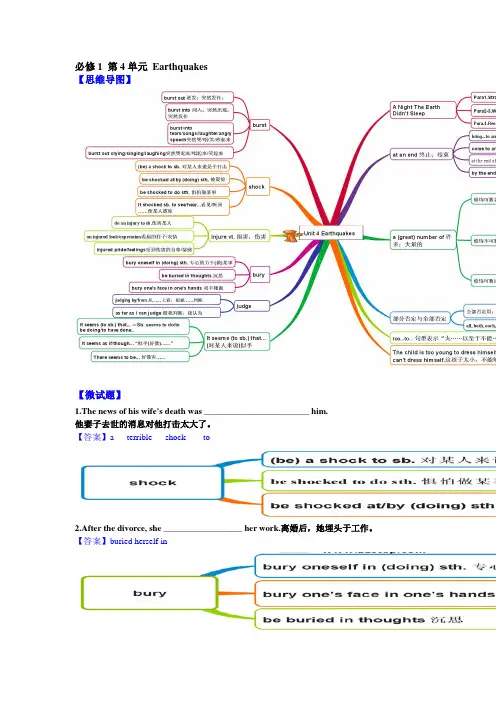
必修1 第4单元Earthquakes【思维导图】【微试题】1.The news of his wife's death was ________________________ him.他妻子去世的消息对他打击太大了。
【答案】a terrible shock to2.After the divorce, she __________________ her work.离婚后,她埋头于工作。
【答案】buried herself in3.______________ his accent, he must be a southerner.根据他的口音判断,他一定是个南方人。
【答案】Judging from/by4.[2014山东高考]阅读理解。
One morning, Ann’s neighbor Tracy found a lost dog wandering around the local elementary school. She asked Ann if she could keep an eye on the dog. Ann said that she could watch it only for the day.Tracy took photos of the dog and printed off 400 FOUND fliers(传单), and put them in mailboxes. Meanwhile, Ann went to the dollar store and boug ht some pet supplies, warning her two sons not to fall in love with the dog. At the time, Ann’s son Thomas was 10 years old, and Jack, who was recovering from a heart operation, was 21 y ears old. Four days later Ann was still looking after the dog, whom they had started to call Riley. When she arrived home from work, the dog threw itself against the screen door and barked madly at her. As soon as she opened the door, Riley dashed into the boys’ room where Ann found Jack suffering from a heart attack. Riley ran over to Jack, but as soon as Ann bent over to help him the dog went silent.“If it hadn’t come to get me, the doctor s aid Jack would have died,” Ann reported to a local newspaper. At this point, no one had called to claim the dog, so Ann decided to keep it.The next morning Tracy got a call. A man named Peter recognized his lost dog and called the number on the flier. Tracy started crying, and told him, “That dog saved my friend’s son.”Peter drove to Ann’s house to pick up his dog, and saw Thomas and Jack crying in the window. After a few moments Peter s aid, “Maybe Odie was supposed to find you, maybe you should keep it.”41. What did Tracy d o after finding the dog?A. She looked for its ownerB. She gave it to Ann as a gift.C. She sold it to the dollar store.D. She bought some food for it.42. How did the dog help save Jack?A. By breaking the door for Ann.B. By leading Ann to Jack’s room.C. By dragg ing Jack out of the room.D. By attending Jack when Ann was out.43. What was Ann’s attitude to the dog according to Paragraph 4?A. SympatheticB. DoubtfulC. TolerantD. Grateful44. For what purpose did Peter call Tracy?A. To help her friend’s son.B. To interview TracyC. To take back his dog.D. To return the flier to her.45. What can we infer about the dog from the last paragraph?A. It would be given to Odie.B. It would be kept by Ann’ family.C. It would be returned to Peter.D. It would be taken away by Tracy.【答案】1-5AB DCB【解析】文章讲述了一只走失的小狗和收留它的人家之间发生的感人故事;(1).答案:A解析:由第二段“Tracy took photo of the dog and printed off 400…..and put them in maiboxes.”可知,Tracy 是在印传单,登招领启事,故答案选A:寻找狗的主人。
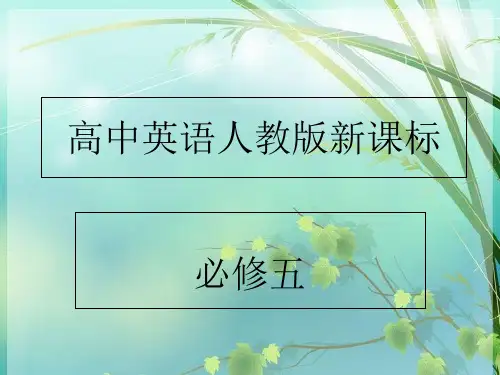
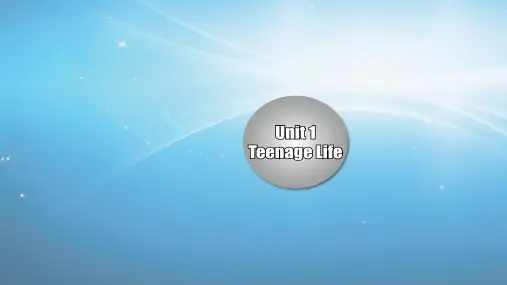
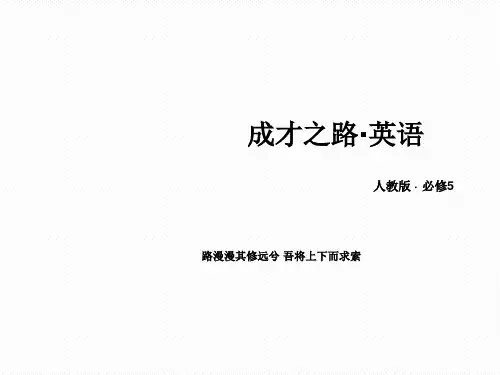
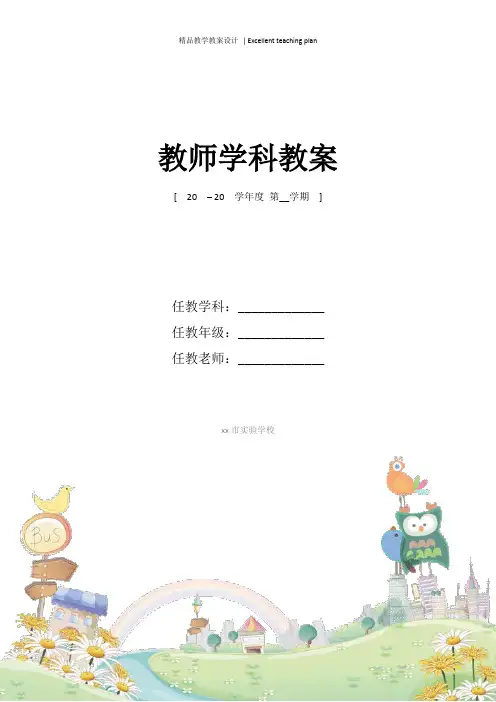
教师学科教案[ 20 – 20 学年度第__学期]任教学科:_____________任教年级:_____________任教老师:_____________xx市实验学校英语必修1(人教新课标)Unit 5 Nelson Mandela—a modern hero 【思维导图】【微试题】1.、He has a watch _________________.他有只质量好的手表。
【答案】of good quality2. She devoted her lifetime ____________ homeless children.她把一生用来帮助无家可归的孩子。
【答案】to helping3. Yao Ming is a basketball player ____________ in China.在中国,姚明是个无与伦比的篮球运动员。
【答案】without equal4.[2014山东高考]阅读理解。
It was one of those terribly hot days in Baltimore. Needless to say, it was too hot to do anything outside. But it was also scorching in our apartment. This was 1962, and I would not live in a place with an air conditioner for another ten years. So my broth er and I decided to leave the apartment to find someplace indoors. He sugg ested we could see a movie. It was a brilliant plan.Movie theaters were one of the few places you could sit all day and—most important —sit in air conditioning. In those days, you could buy one ticket and sit through two movies. Then, the theater would show the same two movies again. If you wanted to, you could sit through them twice. Most people did not do that, but the manager at our theater. Mr. Bellow did not mind if you did.That particular day, my brother and I sat through both movies twice, trying to escape the heat. We bought three bags of popcorn and three sodas each. Then, we sat and watched The Music Man followed by The Man Who Shot Liberty Valanc e. We’d already seen the second movie once before. It had been at the theater since January, because Mr. Bellow loved anything with John Wayne in it.We left the theater around 8, just before the evening shows began. But we returned the next day and saw the same two movies again, twice more. And we did it the next day too. Finally, on the f ourth day, the heat wave broke.Still, to this day I can sing half the songs in The Music Man and recite half of John Wayne and Jimmy Stewart’s dialogue from The Man Who Shot Liberty Valance! Those memories are some of the few I have of the heat wave of 1962. They’re really memories of the screen, not memories of my life.1.In which year did the author first live in a place with an air conditioner?A. 1952B. 1962C. 1972D. 19822.What does the underlined word ”It” in Paragraph 3 refer to?A. The heatB. The theater.C. The Music ManD. The Man Who Shot Liberty Valance3.What do we know about Mr. Bellow?A. He loved children very much.B. He was a fan of John Wayne.C. He sold air conditioners.D. He was a movie star.4.Why did the author and his/her brother see the same movies several times?A. The two movies were really wonderful.B. They wanted to avoid the heat outside.C. The manager of the theater was friendly.D. They liked the popcorn and the soda at the theater.5.What can we learn from the last paragraph?A. The author turned out to be a great singer.B. The author enjoyed the heat wave of 1962.C. The author’s life has been changed by the two movies.D. The author considers the experience at the theater unforgettable.【答案】1-5CDBBD【解析】讲述了作者与其兄弟两个为了躲避酷暑而连续几天到电影院看电影的趣事。
Unit 1 Great scientistsTeaching aims1.To help students learn to describe people2.To help students learn to read a narration about John Snow3.To help students better understand “Great scientists”4.To help students learn to use some important words and expressions5.To help students identify examples of “The Past Participle (1) as the Predicative & theattribute”Period 1 Warming up and readingTeaching ProceduresI. Warming upStep I Lead inTalk about scientist.T: Hi, morning, class. Nice to see you on this special day, the day when you become a senior two grader. I am happy to be with you helping you with your English. Today we are to read about a certain scientist. But first let’s define the word “scientist”. What is a scientist?A scientist is a person who works in science, trying to understand how the universe or other things work.Scientists can work in different areas of science. Here are some examples: Those that study physics are physicists. Those that study chemistry are chemists. Those that study biology are biologists.Step IIAsk the students to try the quiz and find out who knows the most.T: There are some great scientific achievements that have changed the world. Can you name some of them? What kind of role do they play in the field of science? Do these achievements have anything in common? Match the inventions with their inventors below before you answer all these questions.1. Archimedes, Ancient Greek (287-212 BC), a mathematician.2. Charles Darwin, Britain (1808-1882). The name of the book is Origin ofSpecies.3. Thomas Newcomen, British (1663-1729), an inventor of steam engine.4. Gregor Mendel, Czech, a botanist and geneticist.5. Marie Curie, Polish and French, a chemist and physicist.6. Thomas Edison, American, an inventor.7. Leonardo da Vinci, Italian, an artist.8. Sir Humphry Davy, British, an inventor and chemist.9. Zhang Heng, ancient China, an inventor.10. Stepper Hawking, British, a physicist.II. Pre-readingStep IGet the students to discuss the questions on page 1 with their partners. Then ask the students to report their work. Encourage the students to express their different opinions.1.What do you know about infectious diseases?Infectious diseases can be spread to other people. They have an unknown cause and need public health care to solve them. People may be exposed to infectious disease, so may animals, such as bird flu,AIDS, SARS are infectious diseases. Infectious diseases are difficult to cure.2.What do you know about cholera?Cholera is the illness caused by a bacterium called Vibrio cholerae. It infects people’s intestines(肠), causing diarrhea and leg cramps (抽筋).The most common cause of cholera is by someone eating food or drinking water that has been contaminated(污染) with the bacteria. Cholera can be mild(不严峻的) or even without immediate symptoms(病症), but a severe case can lead to death without immediately treatment.3. Do you know how to prove a new idea in scientific research?Anybody might come out with a new idea. But how do we prove it in scientific research? There are seven stages in examining a new idea in scientific research. And they can be put in the following order. What order would you put the seven in? Just guess.Find a problem→ Make up a question→ Think of a method→ Collect results→Analyse the results→ Draw a conclusion→ Repeat if necessaryIII. ReadingStep I Pre-reading1.Do you know John Snow?John Snow is a well-known doctor in the 19th century in London and he defeated “King Cholera”.2.Do you know what kind of disease is cholera?It is a kind of terrible disease caused by drinking dirty water and it caused a lot of deaths in the old times and it was very difficult to defeat.L e t’s g e t t o k n o w h o w D r.J o h n S n o w d e f e a t e d“K i n g C h o l e r a”i n1854i n L o n d o n i n t h i s r e a d i n g p a s s a g e:Step II SkimmingRead the passage and answer the questions.1.Who defeats “King Cholera“? (John Snow)2.What happened in 1854? (Cholera outbreak hit London.)3.How many people died in 10 days? (500)4.Why is there no death at No. 20 and 21 Broad Street as well as at No. 8 and 9Cambridge Street?(These families had not drunk the water from the Broad Street pump.)(Optional)Skim the passage and find the information to complete the form below.Step III ScanningRead the passage and number these events in the order that they happened.2 John Snow began to test two theories.1 An outbreak of cholera hit London in 1854.4 John Snow marked the deaths on a map.7 He announced that the water carried the disease.3 John Snow investigated two streets where the outbreak was very severe.8 King Cholera was defeated.5 He found that most of the deaths were near a water pump.6 He had the handle removed from the water pump.Step IV Main idea and correct stageRead the passage and put the correct stages into the reading about research into a disease.Step V Group discussionAnswer the questions (Finish exercise 2 on Page 3)1. John Snow believed Idea 2 was right. How did he finally prove it?(John Snow finally proved his idea because he found an outbreak that was clearly relatedto cholera, collected information and was able to tie cases outside the area to the polluted water.)2. Do you think John Snow would have solved this problem without the map?(No. The map helped John Snow organize his ideas. He was able to identify those households that had had many deaths and check their water-drinking habits. He identified those houses that had had no deaths and surveyed their drinking habits. The evidence clearly pointed to the polluted water being the cause.)3. Cholera is a 19th century disease. What disease do you think is similar to cholera today?(Two diseases, which are similar today, are SARS and AIDS because they are both serious, have an unknown cause and need public health care to solve them.)Step VI Using the stages for scientific research and write a summary.Period 2&3 Language focusStep I Warming up1.characteristic①n. a quality or feature of sth. or someone that is typical of them and easy to recongnize.特点;特性What characteristics distinguish the Americans from the Canadians.② a. very typical of a particular thing or of someone’s characer 典型性的,Such bluntness is characteristic of him.Windy days are characteristic of March.[辨析]characteristic与charactercharacteristic是可数名词,意为“不同凡响的特点“character表示(个人、集体、民族特有的)“性格、品质”,还意为“人物;文字”What you know about him isn’t his real character.2. put forward: to state an idea or opinion, or to suggest a plan or person, for other people to consider提出He put forward a new theory.The foreigners have put forward a proposal for a joint venture.An interesting suggestion for measuring the atmosphere around Mars has been put forward.☆ put on穿上;戴上;增加put out熄灭(灯);扑灭(火) put up with…忍受put down写下来;放下;put off 延误; 延期put up成立; 建造,put up举起,搭建,粘贴3. analyze: to examine or think about something carefully in order to understand it vt.分析结果、检讨、细察A computer analyses the photographs sent by the satellite.The earthquake expert tried to analyze the cause of the earthquake occurred on May 12,2020.Let’s analyze the problem and see what went wrong.He analyzed the food and found that it contained poison.We must try to analyze the causes of the strike.☆ analysis n.分析,解析,分解4. conclude: decide that sth. is true after considering al the information you have 得出结论;推论出to end sth. such as a meeting or speech by doing or saying one final thing vt. & vi终止,终止;We concluded the meeting at 8 o’clock with a prayer.From his appearance we may safely conclude that he is a heavy smoker.What do you conclude from these facts?We conclude to go out / that we would go out.conclusion n.结论arrive at a conclusion; come to a conclusion; draw a conclusion; reach a conclusionWhat conclusion did you come to / reach / draw / arrive at?From these facts we can draw some conclusions about how the pyramids were built.Step 2 Reading1. defeat① vt. to win a victory over someone in a war, competition, game etc.打败,战胜,使受挫I’ve tried to solve the problem, but it defeats me!Our team defeated theirs in the game.② n.失败,输failure to win or succeedThis means admitting defeat.They have got six victories and two defeats.[辨析]win, beat与defeat①win “博得”赛事、战事、某物;后接人时,意为“争取博得…的好感或支持;说服”②beat “战胜”“击败”竞赛中的对手,可与defeat互换We beat / defeated their team by 10 scores.They won the battle but lost many men.The local ball team won the state championship by beating / defeating all the other teams.I can easily beat /defeat him at golf.He is training hard to win the race and realize his dream of becoming a champion at the 2020 Olympic Games.2. expert①n. someone who has a special skill or special knowledge of a subject专家,能手an expert in psychology an agricultural expert② a. having special skill or special knowledge of a subject熟练的,有专门技术的an expert rider an expert job需专门知识的工作He is expert in / at cooking.3. attend vt. &vi 参加,注意,照料① be present at参加attend a ceremony / lecture / a movie / school / class / a meetingI shall be attending the meeting.Please let me know if you are unable to attend the conference.② attend to (on): to look after, care for, serve伺候, 照顾,看护The queen had a good doctor attending on her.Dr Smith attended her in hospital. 医治Are you being attended to?接待Mother had to attend to her sick son.③ attend to处置,注意倾听attend to the matterA nurse attends to his needs.Can you attend to the matter immediately?I may be late – I have got one or two things to attend to.Excuse me, but I have an urgent matter to attend to.[辨析]attend, join, join in与take part in①attend指参加会议、上课、上学、听报告等②join 指加入某组织、集体,成为其中一员③join in指加入某种活动;表示与某人一路做某事join sb. in sth.④take part in指参加正式的、有组织的活动,切在活动中起踊跃作用Only 2 people attended the meeting.He joined the Communist Youth League in 2007.Will you join us in the game?We often tale part in the after-class activities.4. expose : to show sth. that is usually covered暴露expose sth. to the light of day 把某事暴露于青天白日之下I threatened to expose him ( to the police). 我要挟要(向警察)揭发他.He exposed his skin to the sun.他把皮肤暴露在阳光下.The old man was left exposed to wind and rain.When he smiled he exposed a set of perfect white teeth.5. cure vt. & n. to make someone who is ill well agian医治,痊愈When I left the hospital I was completely cured.①cure sb of a diseaseWhen you have a pain in your shoulders, you will go to see a doctor. The doctor will cure you.The only way to cure backache is to rest.He will cure the pain in your shouldersWhen I left the hospital I was completely cured.The illness cannot be cured easily.Although the boy was beyond cure, his parents tried to cure him of bad habits.②a cure for a diseaseAspirin is said to be a wonderful cure for the pain.There is still no cure for the common cold.Is there a certain cure for cancer yet?③a cure for sth.: to remove a problem, or improve a bad situation解决问题,改善窘境The prices are going up every day, but there is no cure for rising prices.[辨析]cure与treat①cure要紧指痊愈,强调的是结果②treat强调医治进程,指通过药物、专门的食物或运动医治病人或疾病,不强调结果。
【图解教材】之文档:人教必修5 Unit 2 The United Kingdom 【思维导图】【微试题】1.This club ____________ more than 200 members.这个俱乐部由200多个会员组成。
【答案】consists of2. What do you think __________ people ______ big cities?你认为把人吸引到大城市的原因是什么?【答案】attracts to3. I keep my reference books near my desk __________________.我把参考书放在书桌旁以便用着方便。
【答案】for convenience4.阅读理解。
It happened to me recently. I was telling someone how much I had enjoyed reading Barack Obama’s Dreams From My Father and how it had changed my views of our President.A friend I was talking to agreed with me that it was, in his words, “a brilliantly (精彩地)written book”. However, he then went on to talk about Mr. Obama in a way which suggested he had no idea of his background at all. I sensed that I was talking to a book liar.And it seems that my friend is not the only one. Approximately two thirds of people have lied about reading a book which they haven’t. In the World Book Day’s “Report on Guilty Secrets”, Dreams From My Father is at number 9. The report lists ten books, and various authors, which people have lied about reading, and as I’m not one to lie too often (I’d hate to be caught out), I’ll admit here and now that I haven’t read the entire top ten. But I am pleased to say that, unlike42 percent of people, I have read the book at number one, George Orwell’s 1984.I think it’s really brilliant.The World Book Day report also has some other interesting information in it. It says that many people lie about having read Jane Austen, Charles Dickens, Fyodor Dostoevsky (I haven’t read him, but haven’t lied about it either) and Herman Melville.Asked why they lied, the most common reason was to “impress” someone they were speaking to. This could be tricky if the conversation became more in–depth!But when asked which authors they actually enjoy, people named J. K. Rowling, John Grisham, Sophie Kinsella (ah, the big sellers, in other words). Forty-two percent of people asked admitted they turned to the back of the book to read the end before finishing the story (I’ll come clean: I do this and am astonished that 58 percent said they had never done so).1. How did the author find his friend a book liar?A. By judging his manner of speaking.B. By looking into his background.C. By mentioning a famous name.D. By discussing the book itself.2. Which of the following is a “guilty secret” according to the World Book Day report?A. Charles Dickens is very low on the top-ten list.B. 42% of people pretended to have read 1984.C. The author admitted having read 9 books.D. Dreams From My Father is hardly read.3. By lying about reading, a person hopes to .A. control the conversationB. appear knowledgeableC. learn about the bookD. make more friends4. What is the author’s attitude to 58% of readers?A. Favorable.B. UncaringC. DoubtfulD. Friendly【答案】1-4 DBBC.【解析】本文是关于人们读书的话题。
【图解教材】之文档:人教必修5 Unit 1 Great scientists 【思维导图】
【微试题】
1. ____________, wish all of you good health and a long life.最后祝大家健康长寿.
【答案】To conclude
2. He didn‘t __________________ yesterday.他昨天没有参加会议.
【答案】attend the meeting
3. It’s very dangerous to _______________ these viruses without any protection.
不加任何保护,直接暴露在这些病毒下是非常危险的..
【答案】be exposed
4.阅读理解.
They baby is just one day old and has not yet left hospital. She is quiet but alert (警觉). Twenty centimeters from her face researchers have placed a white card with two black spots on it. She stares at it carefully. A researcher removes the card and replaces it by another, this time with the spots differently spaced. As the cards change from one to the other, her gaze(凝视)starts to lose its focus — until a third, with three black spots, is presented. Her gaze returns: she looks at it for twice as long as she did at the previous card. Can she tell that the number two is different from three, just 24 hours after coming into the world?
Or do newborns simply prefer more to fewer? The same experiment, but with three spots shown before two, shows the same return of interest when the number of spots changes. Perhaps it is just the newness? When slightly older babies were shown cards with pictures of objects (a comb, a key, an orange and so on), changing the number of objects had an effect separate from changing the objects themselves. Could it be the pattern that two things make, as opposed to three? No again. Babies paid more attention to squares moving randomly on a screen when their number changed from two to three, or three to two. The effect even crosses between senses. Babies who were repeatedly shown two spots became more excited when they then heard three drumbeats than when they heard just two; likewise (同样地)when the researchers started with drumbeats and moved to spots.
1. The experiment described in Paragraph 1 is related to the baby’s__.
A. sense of hearing
B. sense of sight
C. sense of touch
D. sense of smell
2. Babies are sensitive to the change in______.
A. the size of cards
B. the colour of pictures
C. the shape of patterns
D. the number of objects
3. Why did the researchers test the babies with drumbeats?
A. To reduce the difficulty of the experiment.
B. To see how babies recognize sounds.
C. To carry their experiment further.
D. To keep the babies’ interest.
4. Where does this text probably come from?
A. Science fiction.
B. Children’s literature.
C. An advertisement.
D. A science report.
【答案】1-4 BDCD
【解析】这是一篇医学实验报告,是对孩子的视觉实验.
(1).【答案】B
【解析】根据文章第一段she stares it carefully. Her gaze starts to lose its focus可知,本段是对孩子的视觉实验,故选B.
(2).【答案】D
【解析】根据文章第二段Babies pay more attention to squares moving randomly on a screen when their number changed from two to three, three to two可知D项正确.
(3).【答案】C
【解析】根据文章第一段得知对孩子视力进行实验,接下来用鼓对孩子的听力继续实验,故选C.
(4).【答案】D
【解析】综观全文,这是一篇医学实验报告,故选D.。